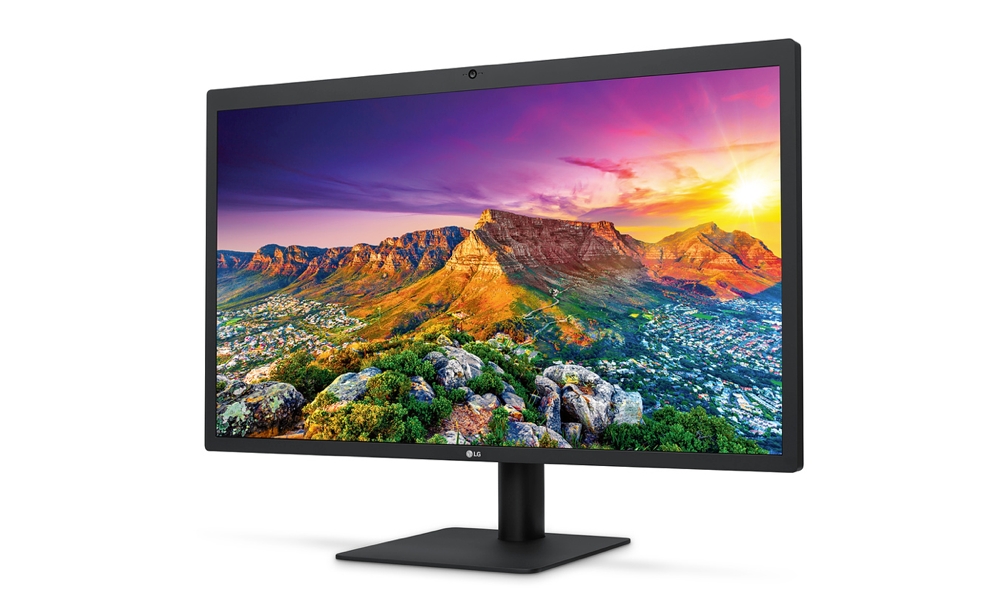The Apple LG UltraFine 5K Display Returns, and It Works with the iPad Pro
 Credit: Apple
Credit: Apple
Toggle Dark Mode
The Mac monitor situation has gotten a bit confusing over the past few months, as stock of Apple-endorsed LG monitors have been disappearing from Apple Stores, leading to speculation that the company may have been going back to building its own full lineup of displays.
This belief was of course bolstered by the rumours that Apple was working on an ultra-high-end 6K “Pro” display — which turned out to be true, but offered no indication that the company had any plans to return to the display market beyond the new Pro Display XDR — a screen that was built to address the needs of those with very demanding display requirements that weren’t really being met by anybody else.
Of course, the very fact that Apple was building a display at all offered some hope that we’d see a wider range of Apple first-party displays, hearkening back to the days before Apple discontinued its Thunderbolt Display and not only ceded the market for Mac displays to other manufacturers, but in fact partnered with LG to design new 4K and 5K displays and sell them in Apple stores.
It’s Still All About LG Displays
However, it seems that any hopes that Apple had planned to get back into the consumer display market have now been dashed. Of course, we weren’t really holding our breath after a new LG 4K display began quietly showing up in May, but there was still a faint possibility that Apple could decide to cover the 5K niche itself, especially with the new USB-C iPad Pro being more focused than ever on external display support, and a dearth of USB-C capable displays.
However, Apple has now just begun carrying a new 27-inch LG UltraFine 5K Display, making it clear that its partnership with LG will continue to be the way forward. The new display doesn’t offer much new in the way of raw specs — it’s still a 5120 x 2880 resolution with 14.7 million pixels and a wide P3 colour gamut — but the big new feature is support for USB-C connectivity, which means that it works with the new iPad Pros.
The prior version of the LG 5K display only connected via Thunderbolt 3 (although the ports are physically identical, the communication protocols aren’t), whereas this new model will connect using either method, which means Thunderbolt 3 for a Mac, and USB-C for an iPad Pro. Apple is also clearly advertising it as such, making it the first “iPad Pro monitor” the company has ever sold.
Connect the UltraFine 5K Display to your MacBook Pro or MacBook Air via an included Thunderbolt 3 cable, which supports 5K video, audio, and data simultaneously. Connect the UltraFine 5K Display to your MacBook or iPad Pro via an included USB-C cable.
But it’s not a 5K Display for the iPad Pro
Unfortunately, there’s still a catch here. While the fact that it’s a 5K display might lead you to believe that you can actually get 5K resolution out of your iPad Pro, it seems that’s not the case. As per Apple’s support page for the new display, you’ll only get 5K when using a Thunderbolt 3 connection from post-2017 iMacs, post-2016 MacBook Pros, and the 2018 and 2019 MacBook Air and Mac mini. For almost everything else in Apple’s product lineup, including the iPad Pro, you’ll only get 4K output, or 3840 x 2160 resolution (the 2014 Mac mini is a weirder exception, providing only 3840 x 1800).
Apple doesn’t really explain why the iPad Pro can’t take advantage of the full 5K resolution of this display, although it’s certainly possible that it’s a limitation in the iPad Pro hardware, or iOS itself — since iOS only supports mirroring of the main iPad display, it’s not entirely clear what would be gained by significantly higher resolution anyway, since even the 12.9-inch iPad Pro only offers a 2732 x 2048 native resolution. However, the USB-C port on the iPad Pro definitely has the bandwidth to handle higher resolutions, so this could simply be an iPadOS limitation which could change in the future, perhaps even when iPadOS 13 arrives later this year.
If you’re hoping to run more than one of these displays, there are some other limitations you’ll want to be aware of as well. The Mac mini, MacBook Air, and iMac can only drive one of these displays, while the 15-inch MacBook Pro can handle two, but only at 4K resolution. In essence, you’ll need an iMac Pro if you want to support two displays in full 5K resolution. It’s also a safe assumption that Apple’s new Mac Pro will also be able to handle this when it arrives.






